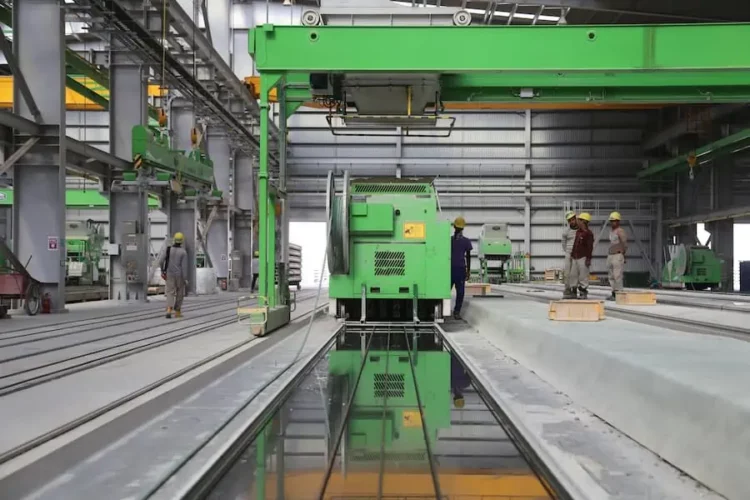Steel and metal fabrication form the backbone of modern industries, propelling innovation and enabling the creation of remarkable structures and products. From towering skyscrapers to intricate automotive components, the art of shaping and manipulating metal has revolutionized various sectors.
In this article, we embark on a journey into the captivating realm of steel and metal fabrication, delving into its importance, intricate processes, diverse applications, and the exciting trends that shape its future.
Understanding Steel And Metal Fabrication
Steel and metal fabrication involves the shaping, joining, and finishing of metal components to create structures and products. It encompasses a range of techniques, from welding and cutting to forming and surface treatment. Understanding the fabrication process and the materials involved is key to appreciating its versatility and wide-ranging applications.
Tools And Equipment In Steel And Metal Fabrication
Steel and metal fabrication relies on a variety of specialized tools and equipment. Welding machines, cutting tools, bending machines, and surface finishing equipment are just a few examples. Familiarizing oneself with these tools, their functions, and safety protocols ensures efficient and safe fabrication processes.
Types Of Steel And Metal Fabrication Techniques
Steel and metal fabrication encompasses a wide range of techniques, each serving a unique purpose in shaping and manipulating metals. These techniques play a crucial role in transforming raw materials into functional and aesthetically pleasing products. Let’s explore some of the key fabrication techniques used in the industry.
- Welding: Welding is the cornerstone of metal fabrication, involving the fusion of metal pieces through heat and pressure. This technique creates strong and durable connections, making it ideal for joining structural components and creating complex assemblies.
- Cutting: Precision cutting techniques are essential for shaping metals into desired forms. Laser cutting, for instance, utilizes a high-energy laser beam to accurately cut through metal sheets, offering intricate and clean cuts. CNC machining, on the other hand, uses computer-controlled tools to shape metal components with high precision.
- Joining: Joining techniques are used to connect metal parts without melting the base material. Brazing involves using a filler metal to bond two or more metal components together at high temperatures while soldering uses a lower-temperature solder to create the connection. These techniques are commonly used for delicate or heat-sensitive applications.
- Rolling: Rolling is a process used to transform metal ingots or billets into desired shapes, thicknesses, and lengths. Rolled metal products are widely used in construction, automotive, and manufacturing industries, providing strength, versatility, and cost-effectiveness.
- Surface Treatment and Finishing: Surface treatment techniques are applied to enhance the appearance, protect against corrosion, and improve the durability of fabricated metal products. Processes such as polishing, painting, and coating provide a protective layer, improve aesthetics, and ensure longevity.
By employing these diverse techniques, skilled fabricators can transform raw metal materials into finished products that meet specific requirements. From structural components to intricate decorative pieces, steel and metal fabrication techniques enable the creation of a wide array of products that shape our world.
Applications Of Steel And Metal Fabrication
Steel and metal fabrication find applications in numerous industries. In construction and architecture, it contributes to the creation of buildings, bridges, and infrastructure. The automotive and transportation industry relies on fabrication for manufacturing vehicles and components. The manufacturing sector employs fabrication techniques to produce machinery and equipment. Additionally, steel and metal fabrication plays a significant role in artistic and creative projects, where it adds uniqueness and aesthetic appeal.
Advancements And Trends In Steel And Metal Fabrication
The world of steel and metal fabrication is not immune to technological advancements. Automation, robotics, and digitalization have revolutionized the industry, improving productivity, precision, and efficiency. Computer-aided design (CAD) software facilitates the design process, while 3d scanning service and 3D printing enables rapid prototyping. Moreover, sustainable practices, including recycling and energy-efficient processes, have gained prominence, contributing to a greener and more environmentally friendly fabrication industry.
Career Opportunities And Education In Steel And Metal Fabrication
A career in steel and metal fabrication offers promising opportunities. Skilled fabricators are in demand, and various job roles exist, such as welders, fabricators, and technicians. Training and educational pathways, ranging from vocational programs to specialized certifications, equip aspiring fabricators with the necessary skills and knowledge. Attention to detail, manual talent, and a passion for working with metal are key attributes for success in this field.
Conclusion
Steel and metal fabrication form the backbone of countless industries, providing the foundation for construction, transportation, manufacturing, and creative endeavors. Exploring the world of fabrication unveils a realm of endless possibilities, where imagination takes shape through metal. As technology continues to advance, the future of steel and metal fabrication looks bright, promising innovative techniques, sustainable practices, and exciting career opportunities. Embrace the world of steel and metal fabrication, and discover the power of transforming raw materials into functional and aesthetic creations that shape our world.







